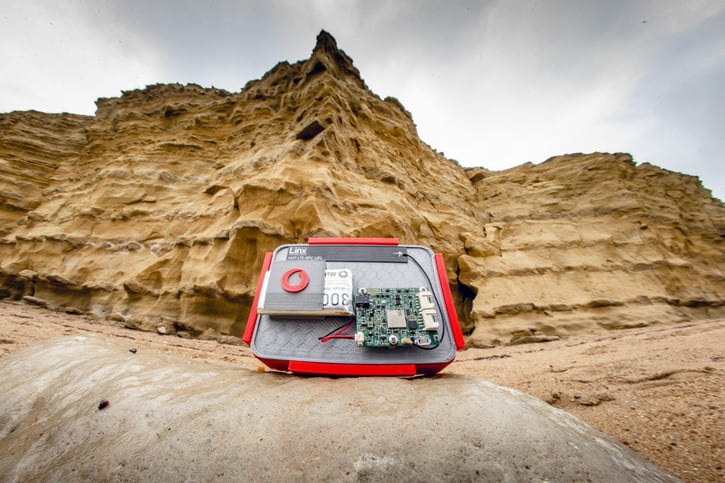How Dorset is leading the way in rural 5G
 A fifth of the UK population (roughly 10 million people) live in rural areas. However, many of these regions still lack adequate connectivity and network infrastructure, and citizens living and working in those localities cannot benefit from the full potential of technology solutions.
A fifth of the UK population (roughly 10 million people) live in rural areas. However, many of these regions still lack adequate connectivity and network infrastructure, and citizens living and working in those localities cannot benefit from the full potential of technology solutions.
In March 2020, Dorset Council started a research and development project with local, national and international partners, 5G Rural Dorset, to explore how 5G can benefit residents and communities in rural and remote areas.
Colin Wood, Programme Manager at 5G Rural Dorset, explains what the project involved and how it worked with different stakeholders for the benefit of residents and visitors.
What is 5G Rural Dorset?
5G Rural Dorset is one of the 10 projects funded through the government's Rural Connected Communities competition, a £30 million programme to trial 5G, build the business case for investment in rural connectivity and explore how this technology can benefit rural areas.
The 5G Rural Dorset project received £9 million, with just over half of that amount (£4.8 million) coming from the Department of Culture, Media and Sport and half from industry partners.
Unlike other networks, 5G can use radio signals and extend the range of frequencies employed for mobile communications, including new spectrum below 6 GHz, as well as spectrum in higher frequency bands up to 100 GHz.
Although low-band 5G cannot deliver data at the same speed as high-band spectrum, it can be used to connect to masts and towers hundreds of miles away, something optimal for sparsely populated rural areas.
Still, most mobile network operators focus their 5G efforts on cities and towns as it is more commercially viable since those are places where populations are concentrated.
In 2020, Dorset began a journey through the 5G Rural Dorset project to “design the blueprint for rolling out 5G in rural areas” and help build the business case that will result in investment in these regions.
“5G is a game changer in that it has applications beyond mobile phones,” Wood says. “So what we were doing with the project was asking how 5G, as a new technology, would help change the landscape around next generation connectivity.”
5G Rural Dorset was divided into five research areas, including agriculture, public safety, defence and national security, coastal stability, and a public network project. Each of those areas have been developed in collaboration with government partners, academia and private industry stakeholders to find innovative solutions for people living, working and visiting the rural and coastal regions in Dorset and what role 5G can play.
Most of these research areas focus on developing innovative technical approaches to bring connectivity to challenging environments using existing infrastructure, such as masts, fibre and buildings, that can host multiple providers’ equipment. By using existing infrastructure and building fewer new masts, the environmental and financial impact is reduced.
Working with external partners to improve coastal safety
The 5G Rural Dorset programme involves spending part of the government funding on "collaboration and dissemination". Wood and his team at Dorset Council have also been collaborating with other local authorities across the country that are working on similar 5G rural projects, testbeds and trials.
“We all learn from each other and we all share our experiences - that could be anything from technological experiences to the difficulties of working in collaboration with academia, industry, public sector partners… because everyone wants something different from a project like this," Wood explains.
One of Dorset's partners is the British Geological Survey (BGS), a geoscience research centre - part of UK Research and Innovation - that provides the UK Government with geoscientific data and information to inform policy. Within the 5G Rural Dorset framework, Wood and his team have been collaborating with BGS to improve coastal cliff monitoring.
“We've got this beautiful coastline that has been designated as a UNESCO World Heritage Site,” Wood says. “We asked - how can we use 5G to make the most of that coast, but also keep people safe at the same time?”
More than a million people visit Dorset’s coast every year, but coastal landslides and cliff failures are a hazard to visitors, residents and workers. The council allocates a great number of resources to manage those risks, but traditional methods of monitoring cliffs falls (a national problem, not only for Dorset) are expensive and time-consuming.
Woods says: “We're working with the BGS and others to use 5G-connected devices to monitor land movement and get to the point where we have better information about the environmental factors that will perhaps precede a catastrophic cliff fall, which in the past, unfortunately, has led to loss of life in Dorset.”
The 5G-connected internet of things sensors deployed collect data, including acceleration and temperature, that are then processed and analysed in the cloud for interpretation by BGS experts.
In addition to this project with BSG, 5G Rural Dorset is also researching how it can improve connectivity along the coast to ensure timely responses from emergency services. Poor or lack of connectivity along the coastline meant that people could not phone 999 in an emergency, Wood says, and the inability to contact emergency services in those locations was a huge problem.
Our plan is to make Dorset a real centre for digital innovation in the UK, particularly in a rural setting.
Another council partner in the project, Excelerate Technology, has deployed infrastructure along the Jurassic Coast to allow 5G coverage for the coastal safety trials. The use cases involved in this trial also included connected signage - the use of 5G to transmit life-saving information, such as tide times and water conditions - high footfall trigger, and surf condition monitoring buoys.
What's next for 5G in Dorset?
The 5G Rural Dorset project, which concluded in June, has also laid the foundations for 5G use cases among other essential areas under the council’s remit, such as social care.
“We have also made that infrastructure useful in other ways, so not only does it provide mobile phone and data coverage, but we’ve used it to do things like provide broadband to people in villages and we’ve used it to put devices that can assist vulnerable people in their homes,” sayas Wood.
Moving forward, he wants the council to build on the progress made through the different research projects part of 5G Rural Dorset and for the local authority to be at the forefront of 5G deployment and usage for the benefit of the local communities.
Wood concludes: “The project has laid the foundations for what we want to do next. We don’t want all these relationships and this momentum that we’ve achieved over the last two years to end with the project. We are looking to use that and develop a new relationship with industry, which hopefully can continue into the future and to provide highly-skilled and interesting jobs for the local people in Dorset.
“Our plan is to make Dorset a real centre for digital innovation in the UK, particularly in a rural setting.” 




